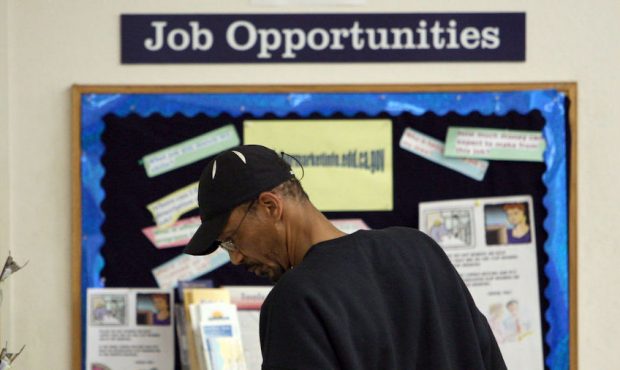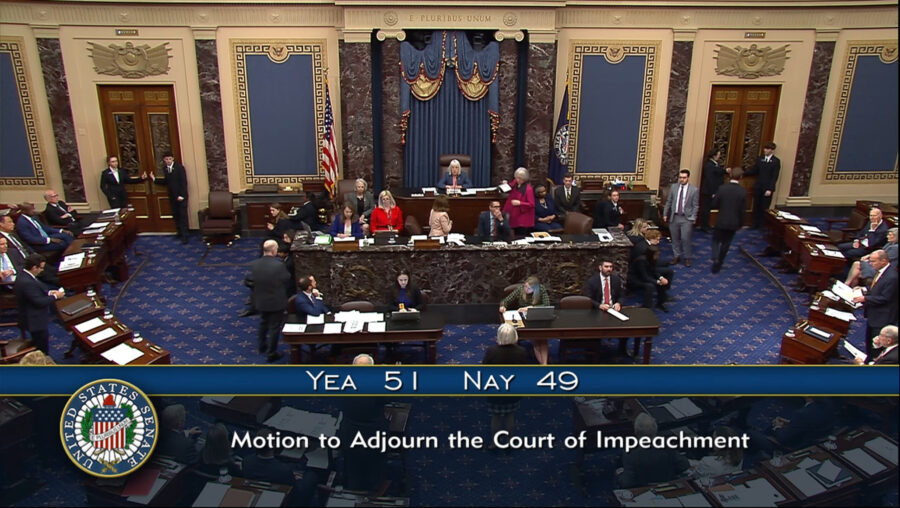US Unemployment Claims Jump To 965,000 As Virus Takes Toll
Jan 14, 2021, 6:53 AM

FILE (Photo by Justin Sullivan/Getty Images)
(Photo by Justin Sullivan/Getty Images)
WASHINGTON (AP) — The number of people seeking unemployment aid soared last week to 965,000, the most since late August and evidence that the resurgent virus has caused a spike in layoffs.
The latest figures for jobless claims, issued Thursday by the Labor Department, remain at levels never seen until the virus struck. Before the pandemic, weekly applications typically numbered around 225,000. Last spring, after nationwide shutdowns took effect, applications for jobless benefits spiked to nearly 7 million — 10 times the previous record high. After declining over the summer, weekly claims have been stuck above 700,000 since September.
The high pace of layoffs coincides with an economy that has faltered as consumers have avoided traveling, shopping and eating out in the face of soaring viral caseloads. More than 4,300 deaths were reported Tuesday, another record high. Shutdowns of restaurants, bars and other venues where people gather in California, New York and other states have likely forced up layoffs.
Some states and cities are resisting shutdowns, partly out of fear of the economic consequences but raising the risk of further infections. Minnesota allowed in-person dining to resume this week. Michigan is poised to do the same. Some bars and restaurants in Kansas City are extending their hours.
In addition to the first-time applications for unemployment aid last week, the government said Thursday that 5.3 million Americans are continuing to receive state jobless benefits, up from 5.1 million in the previous week.
Many more Americans are receiving jobless aid from two federal programs — one that provides extended benefits to people who have exhausted their state aid and another that supplies benefits to self-employed and contract workers.
Those two programs had expired near the end of December. They were belatedly renewed, through mid-March, in a $900 billion rescue aid package that Congress approved and President Donald Trump signed into law. That package also includes $600 relief checks for most adults and a supplemental unemployment benefit payment of $300 a week. Congressional Democrats favor boosting the checks to $2,000 and extending federal aid beyond March, as does President-elect Joe Biden.
The U.S. job market’s weakness was made painfully clear in the December employment report that the government issued last week. Employers shed jobs for the first time since April as the pandemic tightened its grip on consumers and businesses.
The figures also depicted a sharply uneven job market: The losses last month were concentrated among restaurants, bars, hotels and entertainment venues — places that provide in-person services that some governments have restricted or that consumers are avoiding. Educational services, mostly colleges and universities, also cut workers in December. So did film and music studios.
Most other large industries, though, reported job gains. Many economists had expected last spring that job losses would spread to more industries. Though all sectors of the economy initially laid off workers, most of them have avoided deep layoffs. Manufacturing, construction, and professional services like engineering and architecture, for example, all added jobs in December.
At the same time, many companies seem reluctant to ramp up hiring. A government report Tuesday showed that employers advertised fewer open jobs in November than in October. The decline, while small, was widespread across most industries. Even now, the nation has nearly 10 million fewer jobs than it did before the pandemic sent the economy into a deep recession nearly a year ago, having recovered just 56% of the jobs lost in the spring.
Many economists say that once coronavirus vaccines are more widely distributed, a broader recovery should take hold in the second half of the year. The incoming Biden administration, along with a now fully Democratic-led House and Senate, is also expected to push more rescue aid and spending measures that could accelerate growth.












